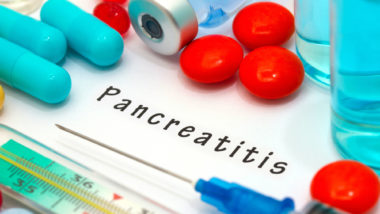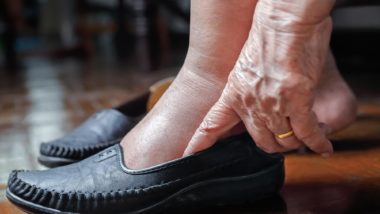Top Class Actions’s website and social media posts use affiliate links. If you make a purchase using such links, we may receive a commission, but it will not result in any additional charges to you. Please review our Affiliate Link Disclosure for more information.

What Are Symptoms of Necrotizing Fasciitis?
According to the Centers for Disease Control and Prevention (CDC), initial symptoms can mimic other skin infections. Redness, swelling and pus oozing from the infected wound are the first signs, but these quickly progress to include severe pain beyond the skin that appears infected.
A fever, dizziness, fatigue, diarrhea or nausea may accompany the appearance of the infected wound. Changes in the color of the skin and even blisters or black spots on the skin that indicate dying tissue may become apparent.
What If Treatment Is Delayed?
Serious complications aren’t just possible, but are common. Sepsis, which is infection throughout the blood, shock and organ failure are all possibilities.
When tissue dies due to a flesh-eating bacterial infection, the dead areas must be removed to stop the infection from spreading. This can mean removal of skin, muscle, tendons, bone and limbs.
Unfortunately, necrotizing fasciitis can be quite deadly. According to the CDC, one in three patients die from flesh-eating bacterial infections even after they have sought and received treatment.
Part of what makes an infection from flesh-eating bacteria so dangerous is that it can worsen quickly. Symptoms can start off mild, so many people might not see a doctor. Delaying treatment can be dangerous, and can make the situation worse. If caught early, the condition can be treated with antibiotics. If caught late, unfortunately, surgery may be required, which may have disfiguring results.
Though the condition sounds horrific, happily, it is quite rare. Only around 205 people in the U.S. become infected with the virus in a given year.
Is It Contagious?
Surprisingly, as virulent as flesh-eating bacteria is, it is very rare for one person to contract the infection from another person who has it.
What Causes Necrotizing Fasciitis?
Any broken area of the skin, such as a cut or a scratch, can become infected if exposed to certain types of bacteria. In addition to entering the body through an open wound, a person can become infected with a flesh-eating bacteria by eating raw or undercooked oysters that have the virus.
Patients who already have compromised immune systems are more susceptible to infection by a flesh-eating bacteria, and tend to fare more poorly than those with healthy immune systems.
Where Is This Bacteria Found?
Flesh-eating types of bacteria are most often found in warm, coastal waters. The bacteria enters the body through the open wound where it rushes to attack muscles and other soft tissues, including organs.
The bacteria are naturally found in the warm coastal waters of Florida, but also have increasingly been found in the Delaware Bay area, possibly due to rising water temperatures in that area that cater to the proliferation of the bacteria. According to the Annals of Internal Medicine, five cases of flesh-eating bacteria were linked to Delaware Bay in the summers of 2017 and 2018, compared with a total of just one infection found in the eight years prior.
Further, in late June 2019, a Florida man said his left bicep swelled almost three times its original size within hours one morning. According to CBS This Morning, he went to the emergency room where he was diagnosed with Vibrio flesh-eating bacteria. The case garnered attention because the man said he was not in the water that day, and has no idea how he came into contact with the bacteria. He owns a water sports business in Santa Rosa Beach.
Is There Only One Type of Flesh-Eating Bacteria?
There is more than one type of flesh-eating bacteria, however the Vibrio vulnificus of the Vibrio bacterial family is especially virulent and is the type most often found in coastal saltwater. It has made headlines recently, and as a result, may be the source of much of the public’s alarm.
Necrotizing fasciitis is caused by a range of bacterias. Most of these bacteria fall into the group A Streptococcus — strangely, the kind of bacteria that causes the much more common strep throat are also included in that family, notes Web MD.
Group A strep bacteria is another type that can cause necrotizing fasciitis. Group A strep has been known to cause sepsis, dangerously low blood pressure and multiple organ failure, a group of symptoms known as streptococcal toxic shock syndrome.
Another type of flesh-eating infection is Fournier’s gangrene, which attacks the soft tissue of the perineum, which is the area between the genitals and the anus. The U.S. Food and Drug Administration (FDA) has warned that patients with diabetes who take SGLT2 inhibitors such as Invokana, Jardiance or Farxiga may be at increased risk of Fournier’s gangrene. A study of necrotizing fasciitis in the Annals of Internal Medicine confirmed the link.
Fournier’s gangrene, just like other types of flesh-eating bacteria, could require surgical intervention to get under control.
Join a Free Diabetes Medications & Flesh-Eating Infection Lawsuit Investigation
The type-2 diabetes medications linked to the flesh-eating infection include:
- Invokana
- Invokamet/Invokamet XR
- Farxiga
- Xigduo XR
- Qtern
- Jardiance
- Glyxambi
- Synjardy/Synjardy XR
- Steglato
- Segluromet
- Steglujan
If you or a loved one took one of the type-2 diabetes medications listed above and suffered from a flesh-eating genital infection, you may qualify to join this diabetes medication lawsuit investigation. Fill out the FREE form on this page for more information.
ATTORNEY ADVERTISING
Top Class Actions is a Proud Member of the American Bar Association
LEGAL INFORMATION IS NOT LEGAL ADVICE
Top Class Actions Legal Statement
©2008 – 2024 Top Class Actions® LLC
Various Trademarks held by their respective owners
This website is not intended for viewing or usage by European Union citizens.
Get Help – It’s Free
Join a Free Diabetes Medications & Flesh-Eating Infection Lawsuit Investigation
If you qualify, an attorney will contact you to discuss the details of your potential case at no charge to you.
PLEASE NOTE: If you want to participate in this investigation, it is imperative that you reply to the law firm if they call or email you. Failing to do so may result in you not getting signed up as a client or getting you dropped as a client.
E-mail any problems with this form to:
Questions@TopClassActions.com.
Oops! We could not locate your form.












